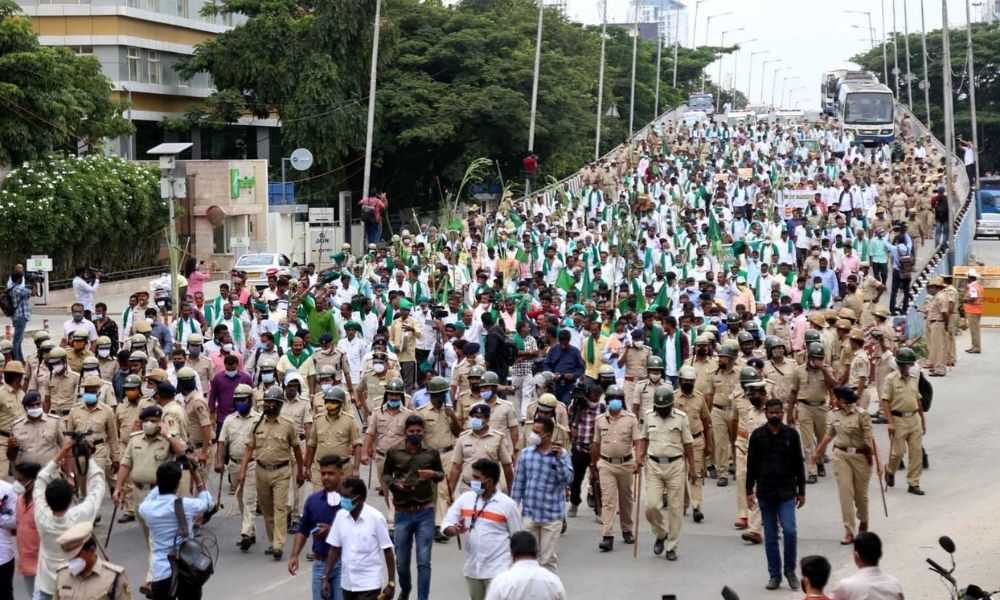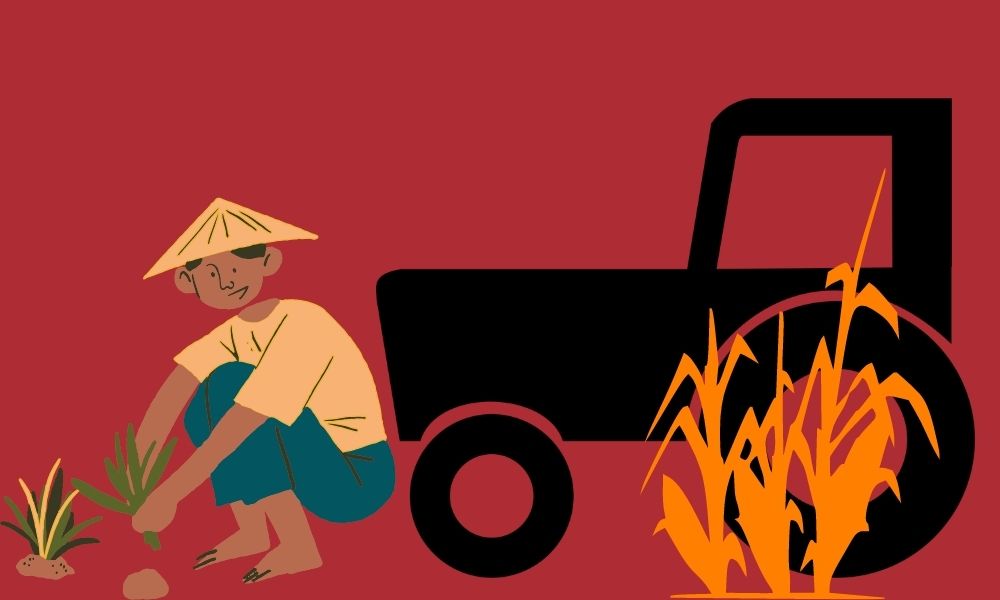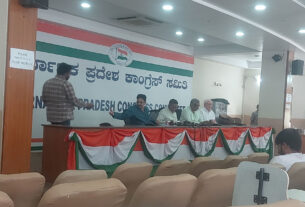Even though India is the second-largest exporter of sugarcane in the world, the sugar mills owe Rs. 15,683 crores to the farmers, across the nation to date.
Sugarcane farmers across the state plan to continue their agitation until the government accepts their demands, said Kurubur Shanthakumar, President of the Karnataka State Sugarcane Growers’ Association, and spokesperson for Samyukta Kisan Morcha.
Despite the central government’s increase in the Fair and Remunerative Price (FRP) of producing sugarcane by Rs. 50 per tonne, Kurubur said, the farmers are still looking at a loss of lakhs of rupees. The cultivation cost has almost doubled, he added.
“The benchmark price is Rs. 2900 per tonne but the cost of the cultivation is almost Rs. 3200 or more,” he said.
Adding to their plight, the factory or mill owners take four months, and sometimes even longer to pay the farmers. “I supply sugarcane to Vijaynagar Sugal Mill, the only one in this district. They haven’t paid me for a year,” said Mabusab Ballari, a sugarcane farmer from Gadak.

“Following the Sugarcane Control Order 1966, the factories are supposed to pay the farmers within 14 days, but that never happens. This is a problem the farmers have been facing for more than three years,” Kurubur said.
Last year, the government had allotted Rs. 1000 crore to assist the sugar mills. Also, they allotted Rs. 600 crores for maintaining a sugar stock of 40 lakh metric tonnes and Rs. 2000 crore towards sugar exports.
In the budget session of the parliament, last year, the government said that date; the sugar mills owe Rs. 15,683 crores to the farmers, across the nation. India is the second-largest producer of sugarcane in the world.
Shivanand Kalkeri, Commissioner for Cane Development and Director of Sugar Department, Karnataka said, “We are aware of the delay in payments from the sugar factories, and have already issued several show-cause notices. But till last year we have cleared 99 percent of payments in Karnataka. Over one year, eight factories had pending payments. Two of them have closed down, which led to the confusion.”
Veeran Gowda and his family of six have a 40-acre sugarcane farm in Mysore. He is supposed to earn around Rs. 20,000 per acre for his harvest. But under the current FRP rates, he is losing more than Rs. 40,000 per acre. Last year he lost more than Rs. six lakh in his produce. Veeran has Rs. 30 lakh in loans still pending at the bank.

He said, “The farmers could profit at least Rs. 30,000 per acre, if the FRP rate was revised.”
However, Shivanand said, “The FRP has been scientifically calculated by officials at the central government and there won’t be any further changes.”
Mabusab, who has a five-acre sugarcane farm in the Gadak district, faced a loss of Rs 80,000 last year. He had invested Rs. 60,000 to grow the plants, including fertilizers and other essentials. “It is very difficult to run my family of five with no profits at all from the sugarcane sale,” he said.

This year heavy rain has destroyed almost half of the farmer’s produce across Mandya and Mysore. Most of the Mabusab’s crops have submerged and now he fears they will rot.
“If the crop is not harvested on time, flowers start to bloom on them, especially in the winter. Then its weight reduces and so does the price,” he said.
Mabusab has taken a loan of Rs. three lakh to keep his family running. For the last two years, he has been unable to repay the loan. Last week, he got a notice from the bank to repay the loan.
Last Wednesday, several farmers had blocked the highways across the state to show their solidarity in the protest.
Apart from demanding a fair share of FRP, the farmers are also demanding a share of the profits from the sale of ethanol and other sugar by-products. They also want sugarcane to be insured under the PM Fasal Bima Yojana.
Dr. Swamy Gowda, Associate Professor at Zonal Agriculture Research Station said, “The committee led by C. Rangarajan, Chairman of the Prime Minister’s Economic Advisory Council, 2012 stated that the mills should share 70 percent of their profits from the sale of the by-products with the farmers. But it is still not being implemented.”
The research done at the Zonal Agriculture Research Station showed that the current FRP is inadequate for the farmers, he said.
“Over the last few years, the price of diesel and fertilizers has increased. The current FRP rate is uneconomical for the farmers. They will suffer until the government decides to revise the estimates done by scientific means,” he concluded.




